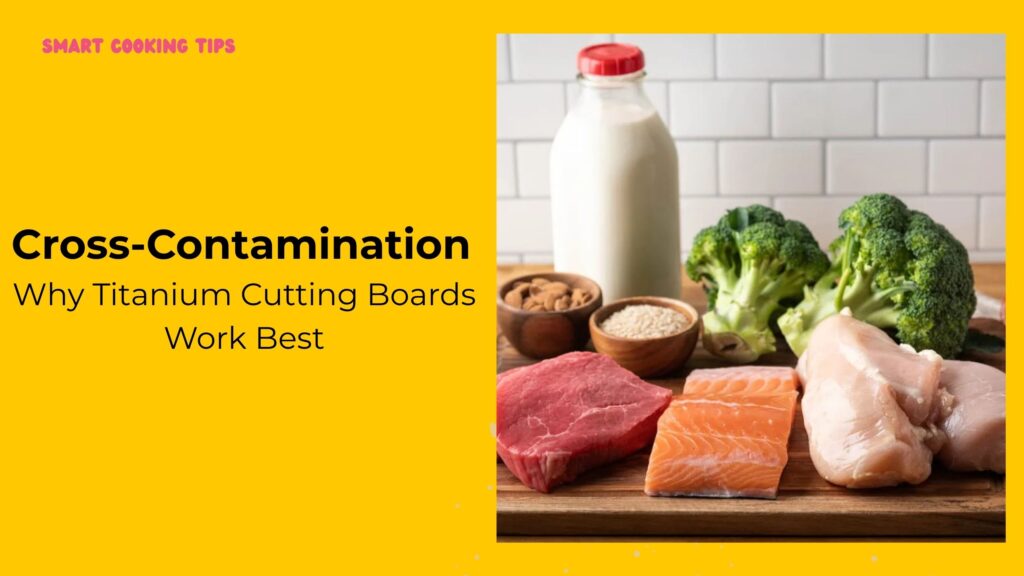Cross-contamination is a hidden but serious kitchen hazard that can cause foodborne illnesses. Whether you’re an experienced cook or just starting out, preventing this type of contamination is absolutely essential for keeping your meals safe and healthy. Even a small mistake—like using the same cutting board for raw chicken and vegetables—can transfer harmful bacteria. Understanding how to reduce contamination risks helps protect both your health and your food. One of the easiest and most effective solutions is using a titanium cutting board. This article will explain what this hazard is, outline its main types, and show how a titanium cutting board can significantly reduce your risk.
What Is Cross-Contamination?
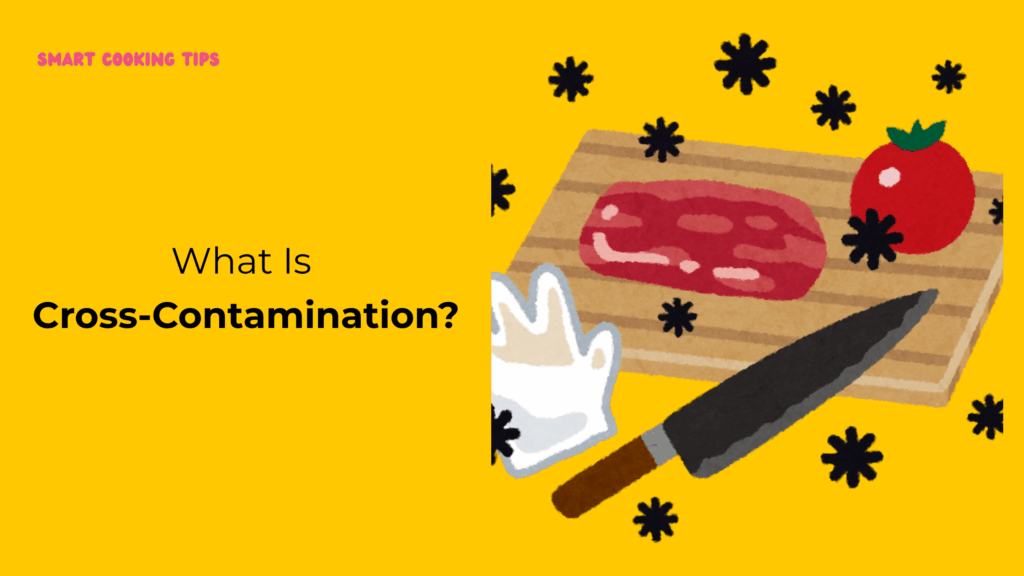
Cross-contamination is the transfer of harmful bacteria or pathogens from one object or food item to another. This can happen through direct contact—such as raw chicken touching fresh lettuce—or indirectly through contaminated utensils, cutting boards, or even unwashed hands. It is a leading cause of foodborne illness and often goes unnoticed in busy kitchens, posing significant health risks.
It is especially dangerous when raw meats come into contact with ready-to-eat foods like salads, fruits, or cooked dishes. For example, slicing raw poultry and then chopping apples on the same board without washing it can transfer harmful bacteria. Even a small mistake can lead to serious health risks. Prevention starts with awareness—and choosing the right tools. Non-porous, easy-to-clean surfaces like titanium cutting boards make it easier to maintain proper kitchen hygiene.
Types of Cross-Contamination
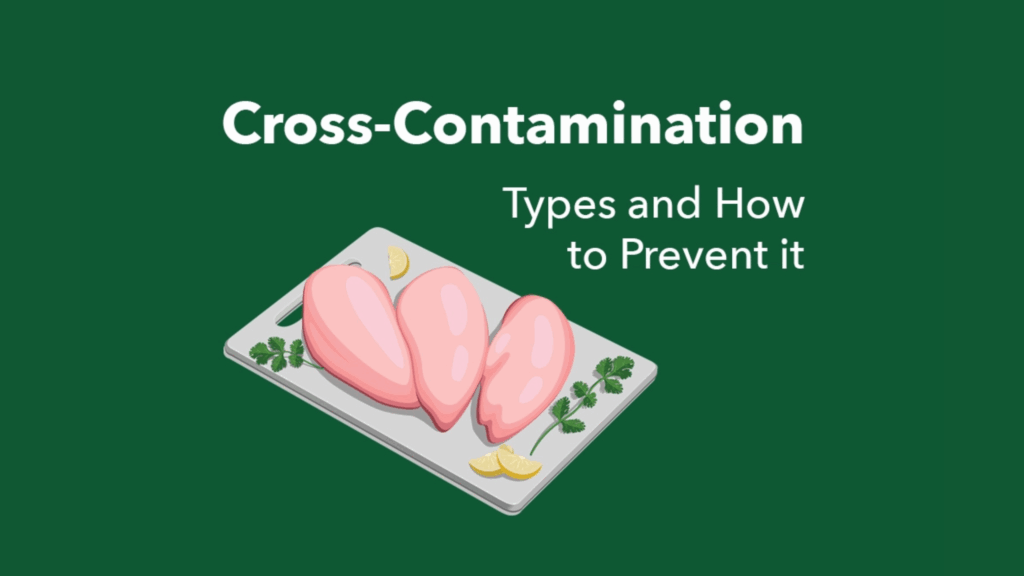
There are three main types of cross-contamination every cook should know:
- Direct Cross-Contamination: This occurs when raw food, like meat, comes into contact with ready-to-eat items. For example, placing cooked steak on a plate previously used for raw meat can transfer harmful bacteria.
- Indirect Cross-Contamination: This happens through shared utensils or surfaces. Using the same cutting board or knife for raw shrimp and vegetables without cleaning in between is a common example.
- Airborne Cross-Contamination: Tiny droplets from chopping or cooking raw foods can become airborne, settling on clean surfaces or nearby food, spreading bacteria silently.
Recognizing these types of cross-contamination is key to smarter kitchen safety. Many people ask how to prevent cross contamination effectively—understanding these pathways is the essential first step. Combine this knowledge with using hygienic tools like a titanium cutting board, which resists bacteria and is easy to clean, and you significantly reduce the risk of contamination in your kitchen.
Side Effects of Cross-Contamination
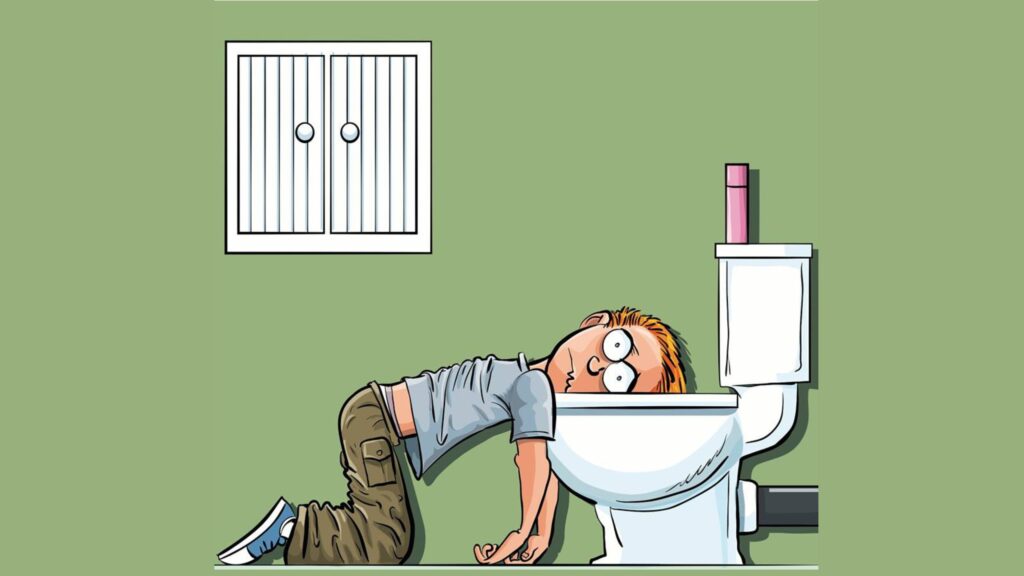
Cross-contamination can cause more than just an upset stomach—it poses serious health risks. Here’s why preventing it is crucial:
- Foodborne Illnesses: Bacteria like Salmonella, E. coli, and Listeria can cause vomiting, diarrhea, fever, and stomach pain.
- Hospitalization: Vulnerable groups such as children, the elderly, and pregnant women are at higher risk of severe complications requiring medical care.
- Long-Term Damage: Frequent exposure to contaminated food may lead to chronic issues like kidney damage and digestive problems.
Understanding how bacteria spread in the kitchen is key to protecting your health. Even a small slip-up, like using the same cutting board for raw meat and vegetables, can transfer harmful germs to your food.
Using a non-porous titanium cutting board is a smart defense. Its easy-to-clean surface stops bacteria from settling and spreading, helping you maintain a safer kitchen and protecting your family from illness.
How to Avoid Cross-Contamination
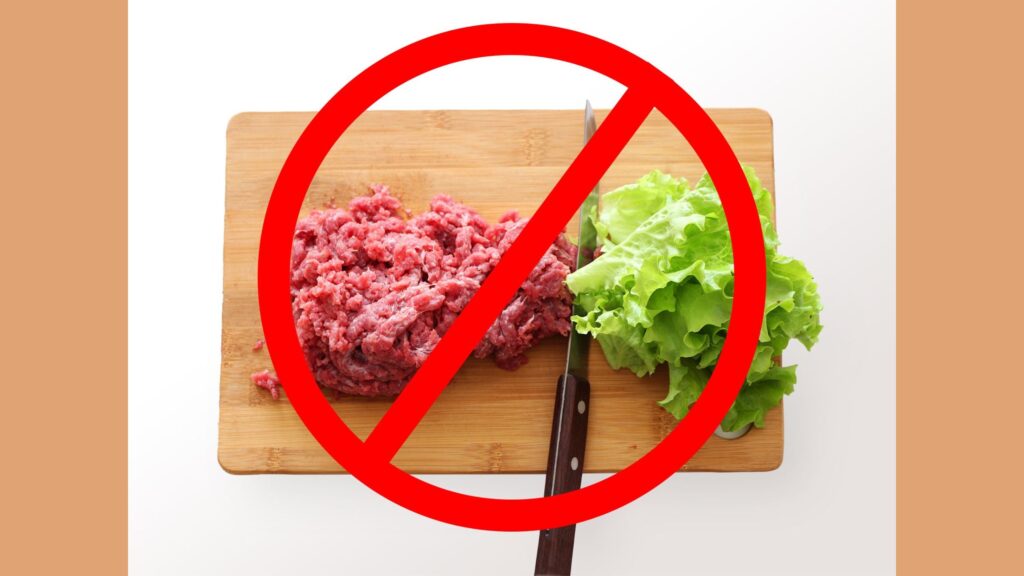
Preventing cross-contamination takes more than a quick rinse. If you’re serious about kitchen hygiene, here’s how to prevent cross contamination effectively—even with top-tier tools:
- Use Separate Cutting Boards: Designate individual boards for raw meats, produce, and cooked foods to avoid mixing pathogens.
- Wash Hands Often: Always scrub your hands with hot, soapy water before and after handling raw meat, poultry, or seafood.
- Sanitize Tools & Surfaces: Clean knives, countertops, and cutting boards using food-safe disinfectants or hot water and soap after each use.
- Air-Dry Thoroughly: Never store a damp cutting board. Let it dry fully to prevent bacterial growth.
Even if you’re using a titanium cutting board, maintaining these habits is essential. Cross-contamination thrives on small lapses in hygiene. Practicing strict food safety protocols—paired with a hygienic, non-porous titanium surface—adds a powerful layer of protection for your kitchen and your health.
How Titanium Cutting Boards Help Prevent Cross-Contamination
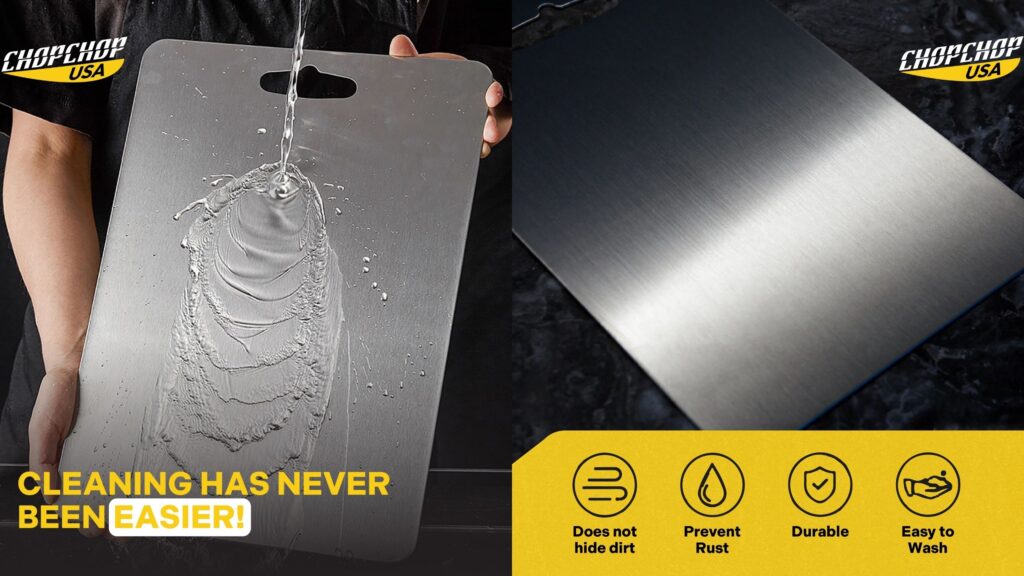
A titanium cutting board is a top choice for anyone serious about preventing cross-contamination in the kitchen. Its advanced materials and hygienic design offer a safer way to prepare food, making it an essential tool when learning how to prevent cross contamination.
Why Titanium Works Best:
- Non-Porous Surface: Unlike wood or plastic, titanium blocks bacteria from being absorbed, preventing harmful pathogens from settling in.
- Scratch-Resistant: Titanium resists deep grooves that often harbor bacteria, reducing contamination risks.
- Odor & Stain Resistant: Keeps your cutting board fresh and free from lingering smells or discoloration.
- No Microplastics: Unlike plastic boards that degrade and shed particles, titanium remains intact and safe.
- Easy to Clean: Dishwasher-safe and simple to sanitize by hand, titanium boards save time and effort.
Using a titanium cutting board helps you stay proactive against cross-contamination. Its durable, non-reactive surface and easy maintenance make it more than just a board — it’s a reliable barrier for safer, cleaner food preparation.
Material Comparison: Why Titanium Is the Safest Choice for Your Kitchen
When it comes to preventing cross-contamination, the material of your cutting board plays a crucial role. Let’s compare wood, plastic, and titanium to see why titanium stands out as the safest and most hygienic choice for your kitchen.
| Material | Risk | Maintenance | Durability |
| Wood | Absorbs liquids and bacteria | Needs oiling and air-drying | Prone to cracking |
| Plastic | Easily scratched and stained | Can shed microplastics | Warps and wears down |
| Titanium | Non-porous and antibacterial | Low maintenance, dishwasher-safe | Long-lasting and durable |
When comparing cutting board materials, titanium consistently wins against all types of cross contamination. If you’re serious about food safety, switching to a titanium board is one of the smartest upgrades you can make.
ChopChop USA Titanium Cutting Board
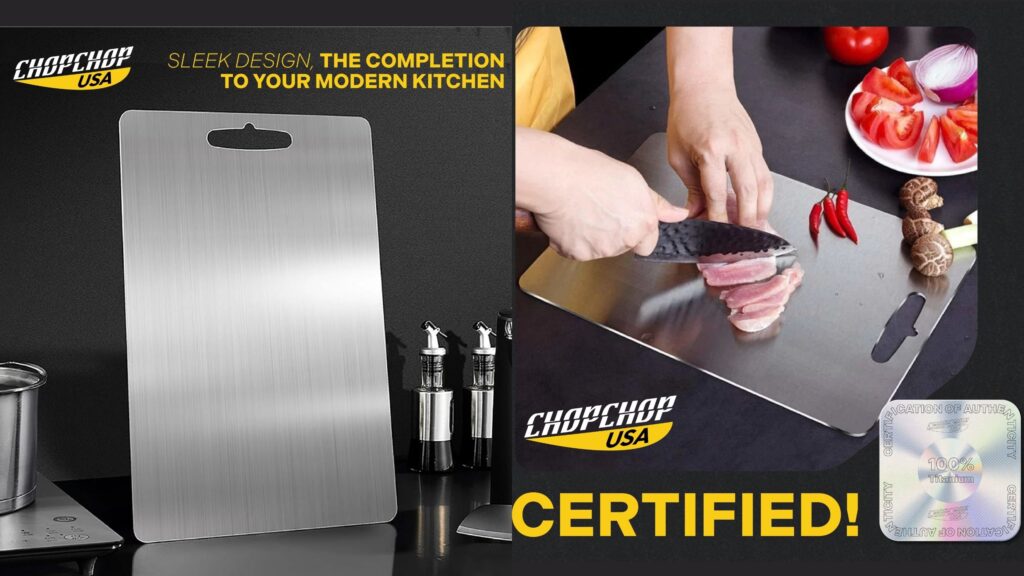
The ChopChop USA Titanium Cutting Board is expertly designed to prevent cross-contamination in even the busiest kitchens. Its innovative dual-surface construction combines the strength and hygiene of titanium with the practicality of biodegradable wheat fiber, creating a versatile and safe prep space.
- Antibacterial Protection: The non-porous titanium surface resists bacterial buildup, helping to ensure safer food preparation.
- Eco-Friendly Materials: Made from recyclable titanium and sustainable wheat fiber, this board reduces environmental impact while delivering top performance.
- Durable Longevity: Engineered to withstand over 10 years of daily use without warping, cracking, or losing integrity.
- Knife-Friendly Surface: Protects your blades by avoiding the dulling effect caused by harder surfaces like glass or stone.
If you’re serious about preventing cross contamination, this cutting board is your ideal partner. Designed to combat all types of contamination—from direct contact with raw foods to indirect transfer—it helps keep your kitchen cleaner and your meals safer. With ChopChop USA, you’re not just cutting—you’re safeguarding health.
ChopChop USA Double-Sided Titanium Cutting Board
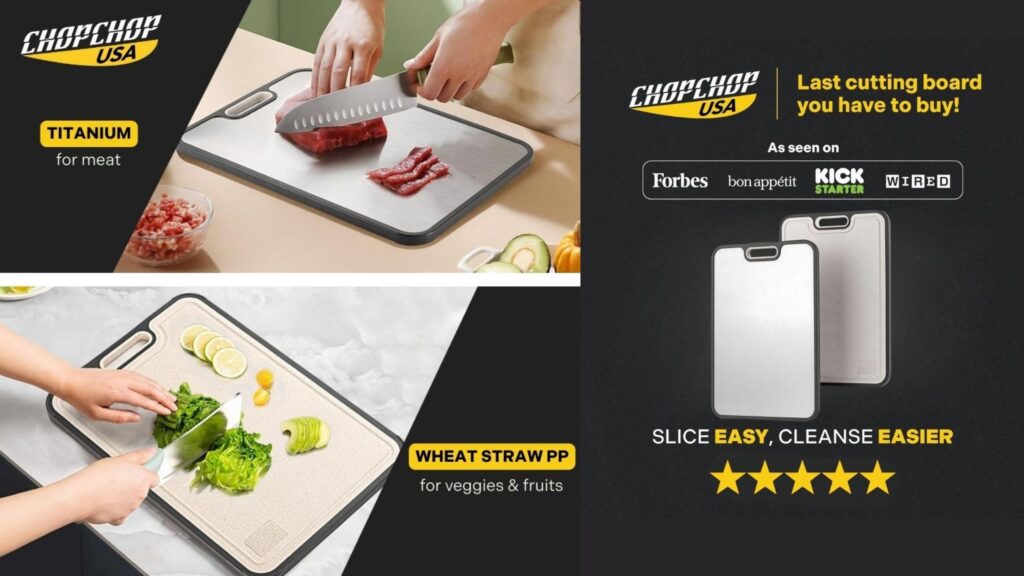
Preventing cross-contamination starts with choosing the right cutting board, and the ChopChop USA Double-Sided Titanium Cutting Board is expertly designed to keep harmful bacteria at bay.
- Titanium Side: Its smooth, scratch-resistant surface is ideal for safely handling raw meats, preventing bacteria from hiding in grooves or pores that commonly develop in other boards.
- Wheat Fiber Side: Featuring grooves to catch juices and crumbs, this side is perfect for prepping fruits, vegetables, and bread without spreading contaminants across your kitchen.
- Antibacterial Surface: The non-porous titanium resists bacterial buildup, making cleaning quick and effective—an essential step to breaking the cycle of cross-contamination.
- Built Tough & Eco-Friendly: Resistant to warping, cracking, and bending, this board is crafted from pure titanium and biodegradable wheat fiber, avoiding the microplastics found in traditional plastic boards.
- Knife-Friendly & Easy to Clean: Gentle on blades and dishwasher-safe, it helps maintain kitchen hygiene effortlessly.
Using this board actively reduces cross-contamination risks, ensuring safer, cleaner food prep every time.
Conclusion
Understanding what is cross-contamination and how to prevent cross contamination is essential for maintaining a safe kitchen. One of the smartest steps you can take is choosing the right tools—like the titanium cutting board from ChopChop USA. Designed specifically to fight the common types of cross contamination in daily cooking, this board offers a hygienic, non-porous surface that resists bacteria. When paired with good hygiene practices and proper food storage, it significantly lowers health risks. For a cleaner, safer kitchen, make titanium your trusted cutting surface. Upgrade today and leave bacterial concerns behind.
FAQs
Can I use one titanium board for everything?
It’s safer to use separate boards—even with titanium—to avoid all types of cross contamination.
Are titanium cutting boards dishwasher-safe?
Yes! They clean easily in the dishwasher without damage.
How long does a titanium cutting board last with regular use?
A titanium cutting board can last 10 years or more with proper care, thanks to its durable and corrosion-resistant material.
Where can I buy a high-quality titanium cutting board?
You can buy quality titanium cutting boards from trusted kitchenware retailers or directly from brands like ChopChop USA online.
Can a titanium cutting board really help prevent cross-contamination in the kitchen?
Yes, titanium’s non-porous, antibacterial surface resists bacteria buildup, making it an excellent choice to reduce cross-contamination risks


